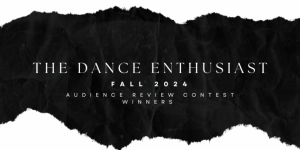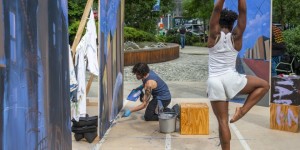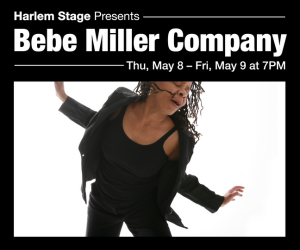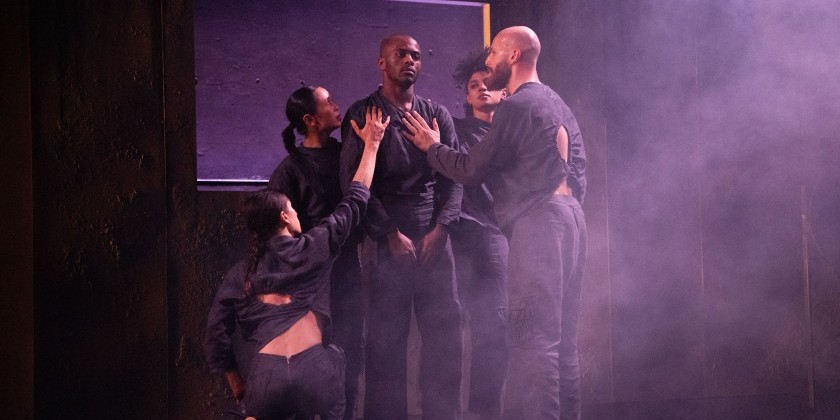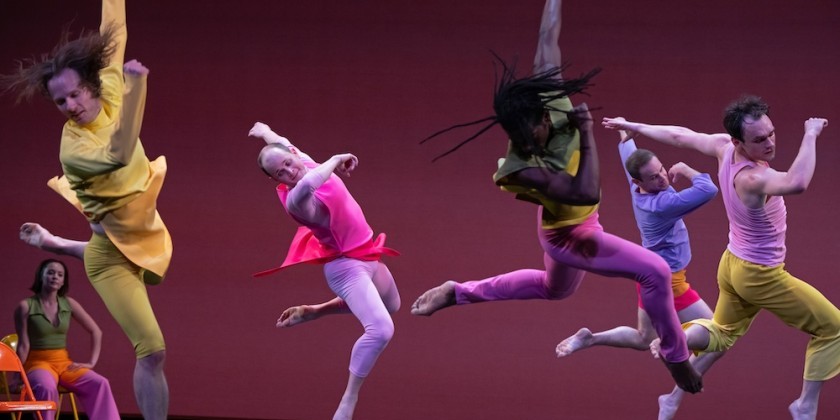Impressions of Aakash Odedra Part of The White Light Festival

A Transformational Experience for the Body and Spirit
Co-presented by Lincoln Center’s White Light Festival and Baryshnikov Arts Center
Inked
Choreography by Damien Jalet / Performed by Aakash Odedra / Music by Loscil
Murmur
Choreography by Aakash Odedra and Lewis Major / Performed by Aakash Odedra / Video Technology by Ars Electronica Futurelab / Music by Nicki Wells
Aakash Odedra must be light. You see, Odedra, like light, behaves as both a particle and a wave. He’s here, there, and everywhere all at once.
Odedra — who resembles a daddy longlegs spider — fuses his Indian dance training in Kathak and Bharatanatyam with contemporary aesthetics. The result is something almost alchemical in its ability to melt time and space until nothing but the dance exists. As part of Lincoln Center's White Light Festival, he performs two works that make the personal, universal.
Grief born of temporariness (his grandmother’s death) and an ache for permanence (the tattoos etched on his grandmother’s hands) form the impetus for Ink, choreographed by Damien Jalet. Odedra beats a swift rat-a-tat into the floor; he ceaselessly, cyclonically spins. Using a puddle of black ink and several charcoals, he smears overlapping circles on the floor and streaks his own arms and chest. His body, finite and transient, strives in a desperate, beautiful attempt to make something lasting.

What if you read this sentence about Odedra’s Murmur, and it looked like this: Wh ati fyo ure adt hiss ent enc e abou t Ode dra’s “Murm u r,” an dit loo kedl ik eth is? That’s just one of the ways dyslexia manifests itself.
In Murmur (co-choreographed by Odedra and Lewis Major), Odedra, a dyslexic, details his struggles with, and victory over, words by finding meaning in movement. Thanks to technology by Ars Electronica Futurelab, he smudges the letter A on gauzy curtains and wafts along with a video projection of a flock of birds. He recounts discovering an extra A in his first name, which he only realized after multiple glances at his passport. In the climax, a tsunami of paper engulfs him, one that he ultimately stacks into coherence.
Whatever the troubles with reading and writing, Odedra communicates masterfully. Wielding his body as both brush and paint, he inscribes the air with arcane, profound gestures. Myriad tracings of the arms, hands, and fingers layer one on top of the other, but nothing edges over into busyness or chaos. The surgical quality — intricate and incremental — exposes the many minute decisions that result in a solitary movement. Elite ballet dancers could look slovenly next to Odedra’s extraordinary refinement.
Themes of eternity and persistence, in the form of circles, pervade both works. During Ink, Odedra somersaults in a sweeping ring, his legs laced into a lotus position. Often, he twirls ritualistically, evoking the dervishes who whirl themselves into religious ecstasy. His body is a loop that travels in a loop, and in these churning revolutions, he manifests an evolution from flesh to spirit.
It doesn’t take long before it all starts to feel a bit trippy. The fuzzy lights and ambient music and convulsing dance suck us into a reeling, hypnotic vortex where the contours defining reality and fantasy recede. With the body, through the body, Odedra seems to be implying, transcendence can occur.
Share Your Audience Review. Your Words Are Valuable to Dance.
Are you going to see this show, or have you seen it? Share "your" review here on The Dance Enthusiast. Your words are valuable. They help artists, educate audiences, and support the dance field in general. There is no need to be a professional critic. Just click through to our Audience Review Section and you will have the option to write free-form, or answer our helpful Enthusiast Review Questionnaire, or if you feel creative, even write a haiku review. So join the conversation.






